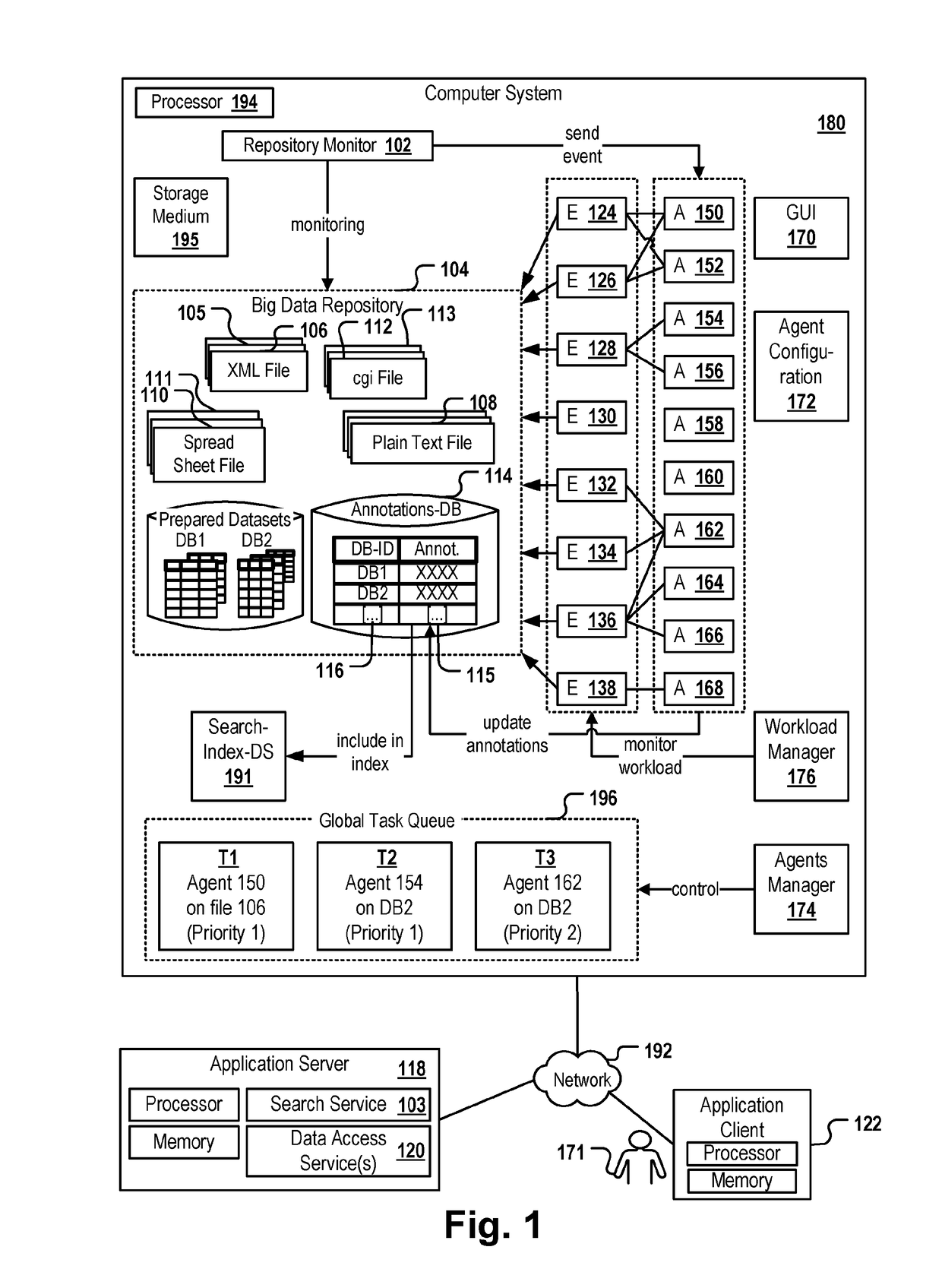Processing data sets in a big data repository
data processing technology, applied in the field of processing data can solve the problems of inability to process the amount of data to be stored in a big data repository by traditional database and software techniques, data may be incomplete, confidential, redundant, inconsistent or syntactically unsuitable for data analysis, etc., and achieve the effect of automatically increasing the quality of search
- Summary
- Abstract
- Description
- Claims
- Application Information
AI Technical Summary
Benefits of technology
Problems solved by technology
Method used
Image
Examples
Embodiment Construction
[0052]FIG. 1 depicts a computer system 180 comprising a processor 194 and a computer readable storage medium 195. The storage medium may be a single storage medium or consist of a plurality of connected storage media. Also, the processor may consist of a plurality of processors operatively coupled to each other. The multiple storage media and processors may be provided and managed, for example, by a cloud-environment. The computer system hosts a Big Data repository 104 which may be based on a distributed file system such as Hadoop. It may comprise a plurality of data sets 105, 106, 110-113, 108, DB1, DB2 which are created and / or processed by a plurality of different agents 150-168. The agents may call program engines 124-138 of very different types for processing the data sets and for executing tasks such as file format recognition, column analysis, ETL operations, data profiling and the like.
[0053]An agent is a component whose execution on one of the data sets is triggered by an ev...
PUM
 Login to View More
Login to View More Abstract
Description
Claims
Application Information
 Login to View More
Login to View More - R&D
- Intellectual Property
- Life Sciences
- Materials
- Tech Scout
- Unparalleled Data Quality
- Higher Quality Content
- 60% Fewer Hallucinations
Browse by: Latest US Patents, China's latest patents, Technical Efficacy Thesaurus, Application Domain, Technology Topic, Popular Technical Reports.
© 2025 PatSnap. All rights reserved.Legal|Privacy policy|Modern Slavery Act Transparency Statement|Sitemap|About US| Contact US: help@patsnap.com



